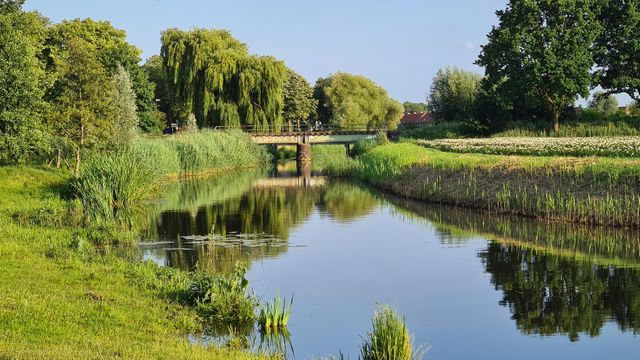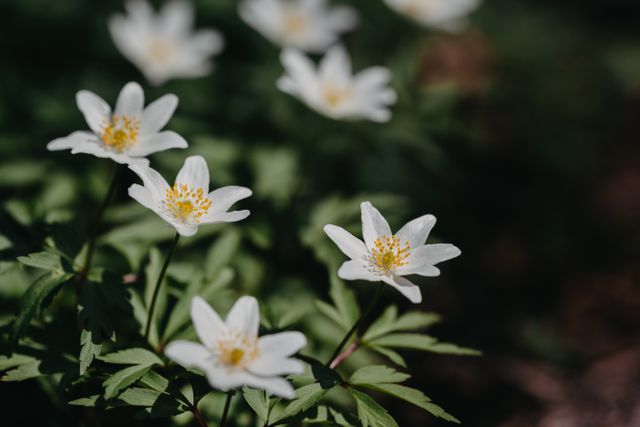This railway bridge across the river Aa is a national monument. The single track bridge dates from the early days of the Duits Lijntje. Next to it you will find a new bridge for cyclists and pedestrians. On the railing of the bridge you can see the names of all the former halts along the Duits Lijntje, from Boxtel to Wesel. Have you discovered Olland, Schijndel, Eerde and Veghel yet?
Aa Broeken
From the bridge you have a beautiful view of nature reserve the Aa Broeken (broek means marshy land). Farmers in Veghel used to grow their crops on the fertile fields here. Calves were grazed in the meadows. As fattened up “kuussen” (calves) they were transported to Germany among other destinations. On the other side of the bridge the spire of the Lambertus church towers above Veghel. The impressive building from 1863 was designed by Pierre Cuypers. The famous architect who also has the Rijksmuseum and Amsterdam Central Station to his name.
Pilgrimage trains
The spire of the church from Veghel was also noticed by the pilgrims who travelled to Germany by train. The so-called procession trains were I big source of income for the Noord-Brabantsch-Duitsche Spoorwegmaatschappij (NBDS). A few months after opening the Duits Lijntje twelve Dutch pilgrimage trains ran to Kevelaer. The other way around, German pilgrims travelled to processions in Brabant by rail.
Waving and singing
Theo Jansen grew up as the son of the stationmaster in Schijndel. In his book he wrote about crowded pilgrimage trains on which people from Schijndel travelled to Kevelaer each year. Around 1930 the pilgrims that came back made an unforgettable impression on him on their return. “When they came back after two days the pilgrims had lost all senses. They were all hanging out of the windows, waving little flags and singing. For the many people who were waiting at the station this delirious crowd was a beautiful spectacle. A visit to Kevelaer was a big experience for the pilgrims.”
-

-

-
Go to other translations
Do you want to read more about the Duits Lijntje? Go (back) to the translations of the other locations on the railway track in Meierijstad.
Go to other translations
